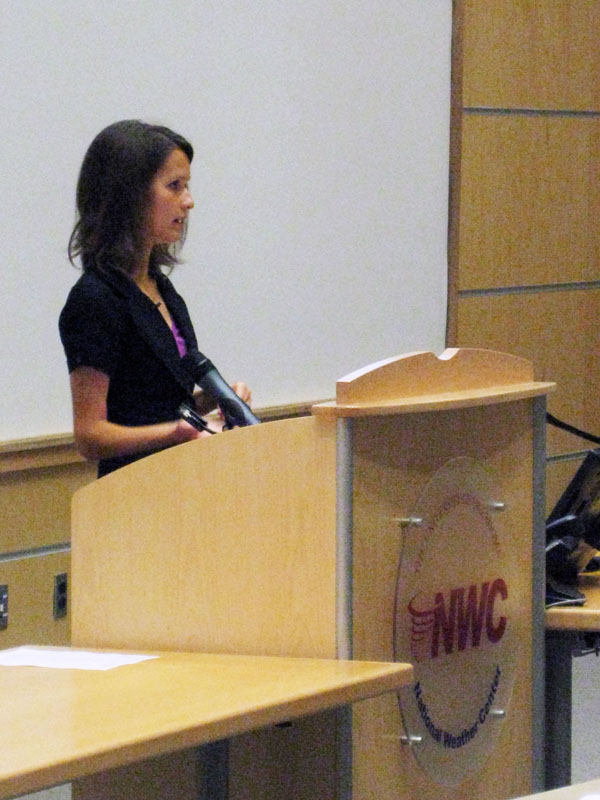May 26 - July 31

Tornado False Alarms on Days With No Reported Tornadoes: A Climatological and Radar Survey
Hannah Barnes, Jerry Brotzge, and Somer Erickson
Abstract:
A five-year study of tornado false alarms, as issued by the National Weather Service (NWS) from 2000 to 2004, found that 31.6% of false alarms occurred on days when the Weather Forecast Office (WFO) was unable to confirm at least one tornado in their county warning area (CWA) from midnight to midnight (i.e., a zero day false alarm). Reviewing tornado warning data obtained from the National Atmospheric and Oceanic Administration (NOAA)/NWS, this study conducted a climatological and radar survey to diagnose situations when false alarms were issued on days with no confirmed tornadoes, i.e., marginally severe days that failed to produce tornadoes. The study was composed of three steps. First, zero day false alarms were compared to tornado day false alarms (days when tornadoes were confirmed within the WFO CWA). Climatological trends were identified in terms of time of day and year, geographic region, county population density, and distance from nearest WSR-88D radar. Second, the impact of the perceived largescale tornadic potential was explored by an examination of Watch information from the Storm Prediction Center. Third, Level 2 radar data were examined. Reflectivity and velocity radar data were used to identify the impact of storm morphology, purple haze, and variations in circulation intensity with height.
This survey suggests four important trends: (i) zero day false alarms comprise a larger percentage of the total number of tornado false alarms in geographic regions less susceptible to tornadoes, (ii) zero day false alarms are more similar to one tornado day warnings than outbreak day false alarms in terms of the perceived large-scale tornadic potential, (iii) the circulation intensity of zero day false alarms and outbreak day false alarms at the lowest height scanned by a WSR- 88D radar is notably weaker than those associated with one tornado day warnings, and (iv) purple haze may be a considerable factor in zero day false alarms and outbreak day false alarms.